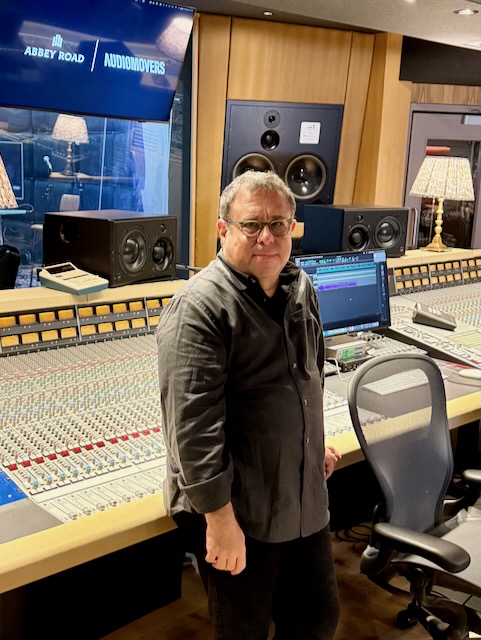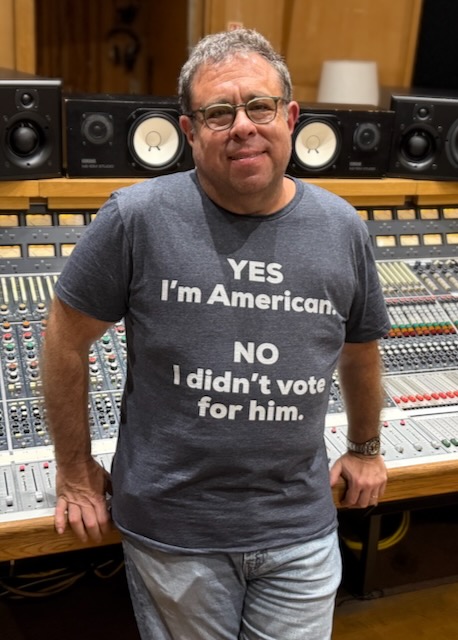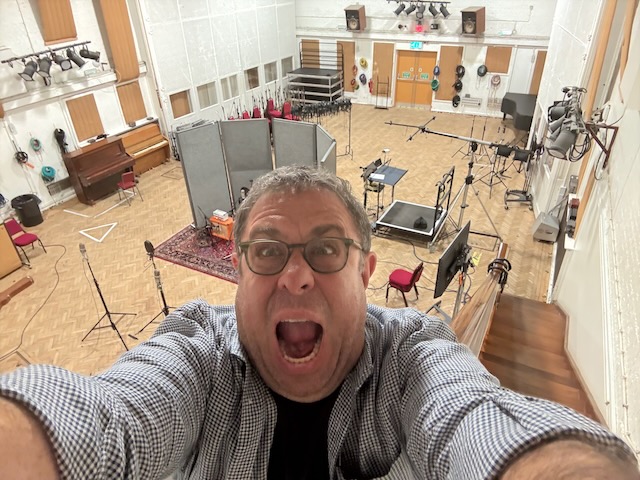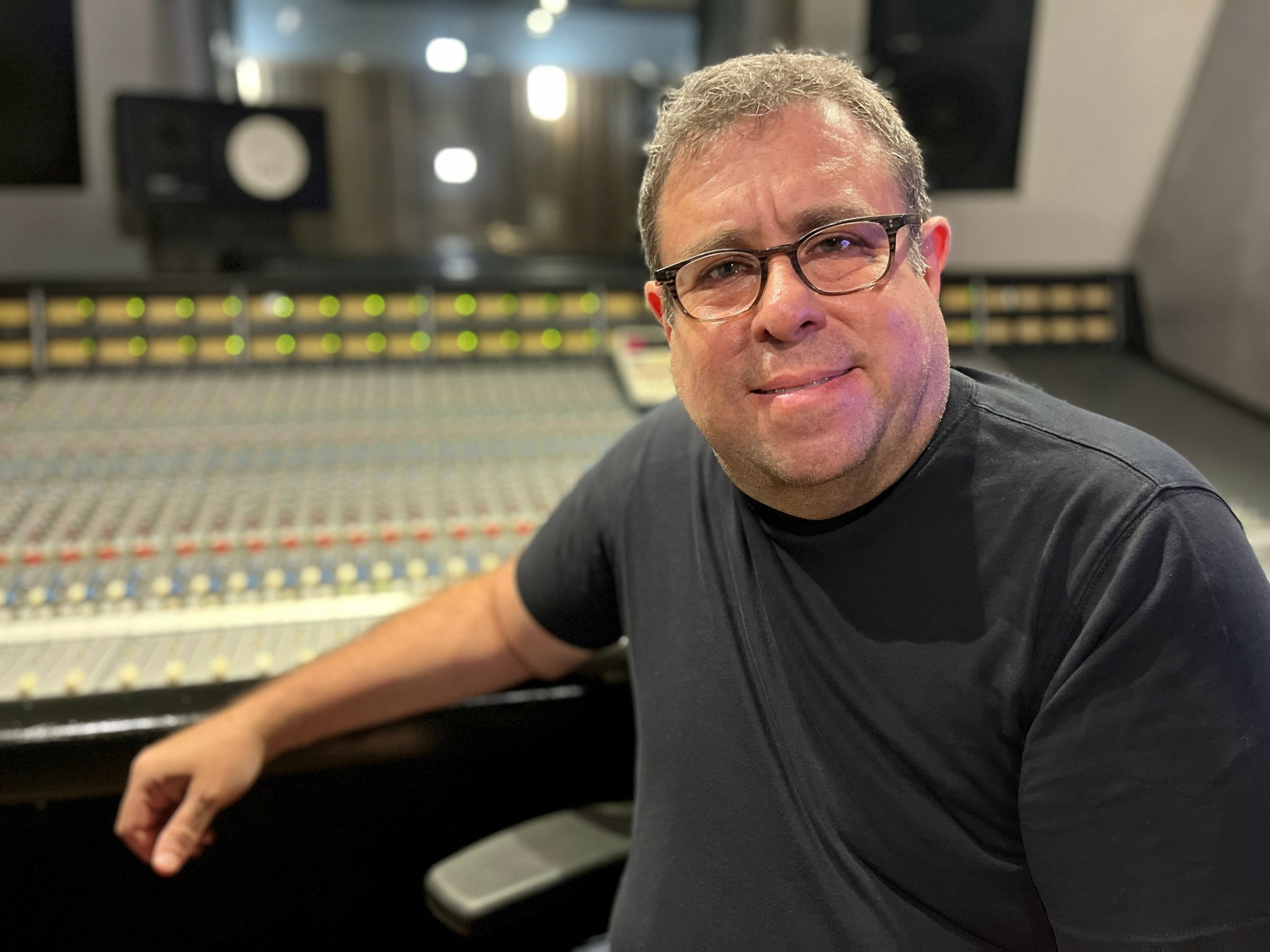We recently connected with Jonathan Appell and have shared our conversation below.
Alright, Jonathan thanks for taking the time to share your stories and insights with us today. Learning the craft is often a unique journey from every creative – we’d love to hear about your journey and if knowing what you know now, you would have done anything differently to speed up the learning process.
I started playing drums at around 10 years old, and even at that young age, I knew I wanted to be involved in the music industry. Of course, at the time, the dream was to become a rock star. But as I got older and learned more about the craft, I realized it would be smart to explore other aspects of music as well—just in case the rock star thing didn’t pan out!
Around the same time I started drumming, I attended a sleepaway camp that had a unique activity—a radio station. That was my first real exposure to audio technology. Fast forward a few years, and a friend invited me to play drums on one of his songs. His father gave us a bit of funding to record it in a small but professional studio in Greenwich Village. That experience completely hooked me—I fell in love with multitrack recording and the process of record production.
In my mid-teens, I started listening to music differently. I wasn’t just enjoying it passively—I was actively analyzing it. I’d ask myself, Why did they choose that guitar tone? How did they create that effect? I’d pay close attention to stereo imaging, instrument balance, and production choices. Without realizing it, I was training my ear and developing critical listening skills that would shape how I approach audio today.
In my early 20s, I formalized my training at the Center for the Media Arts in New York City, where I studied music production and technology. At that time, studio gear was expensive and access was limited, which posed a challenge. Today, with the accessibility of digital audio workstations and home setups, it’s a very different world for students.
One thing I always emphasize—whether in my own work or when teaching—is that technology is just a tool. It’s a means to an end. I often compare it to painting: learning how to mix colors or hold a brush doesn’t make someone an artist. It’s what they do with those tools that defines their artistry. In audio, having a creative vision is just as important as mastering the gear.
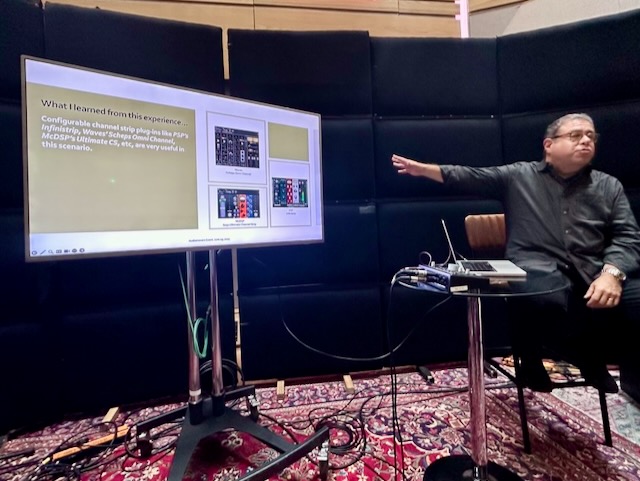
As always, we appreciate you sharing your insights and we’ve got a few more questions for you, but before we get to all of that can you take a minute to introduce yourself and give our readers some of your back background and context?
My name is Jonathan Appell. I am an audio engineer, music producer, professor of audio technology, and voiceover artist. My journey began as a teenager learning multiple instruments—primarily drums, with some guitar and keyboard. While I wasn’t a strong academic student early on, my passion for music and recording never wavered.
Instead of heading straight to college after high school, I attended the Center for the Media Arts, a vocational school where I excelled in the fundamentals of music recording. Later in life, I chose to pursue a formal degree and graduated summa cum laude, proving to myself that when the subject truly matters, I can thrive academically.
My training in audio engineering opened the door to the industry. Like many starting out at the time, I worked for free as an intern—first at Green Street Recording Studios. From there, I advanced to assistant engineer at RVI Studios, and eventually to engineer at Avalon Recording Studios. I was fortunate to work with top-level professional talent early in my career, which gave me valuable perspective and an edge over peers who primarily worked with unproven local acts. Those experiences taught me professionalism, diplomacy, and the importance of delivering outstanding service. In such a competitive field, you never want to give clients a reason to look elsewhere. Ultimately, the role of the production team is to make the artist shine—even beyond their own expectations.
To serve artists well, I’ve always made it a priority to stay current with evolving tools and techniques. That includes mastering the latest updates in Pro Tools—the industry-standard DAW—exploring new processors and technologies, and learning from the insights of top professionals.
As an educator, I bring that same commitment to growth into the classroom. Teaching requires not only technical expertise, but also cultural awareness. I strive to stay connected to the interests and references of my students, understanding what music they listen to and why it resonates. I may not always love every new trend, but I keep an open mind, recognizing the cultural forces that shape what’s popular today.

Let’s talk about resilience next – do you have a story you can share with us?
And sometimes, the most valuable lessons come from unexpected places.
On only my second day as an unpaid intern at Green Street Recording Studios, I learned more about plumbing than audio. A blocked sewer line caused waste from the floors above to pour into our basement sinks and shower. As the “low man on the totem pole,” I was tasked with carrying buckets of… well, waste… up the stairs to the street until a plumber arrived hours later.
In that moment, I had a choice: walk away from a humiliating, unpaid job—or prove my dedication. I chose the latter. Later, I learned that studio owner Steve Loeb told manager David Harrington, the man who hired me: “This kid really wants it.” That commitment paid off. Soon after, I found myself in sessions with legendary artists like Lenny Kravitz, Blues Traveler, Spin Doctors, and Paula Abdul.
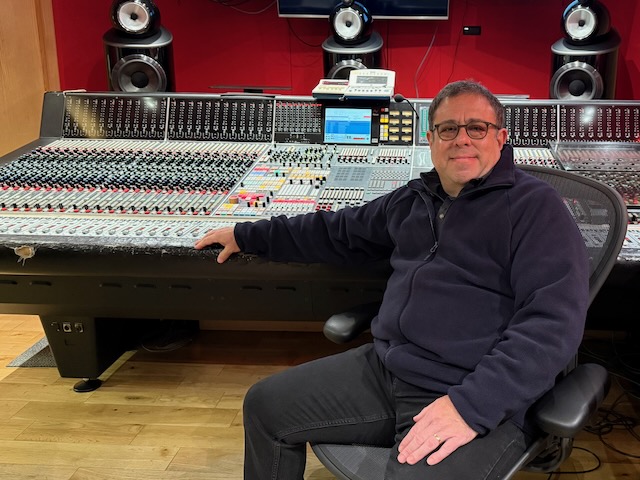
Can you tell us about a time you’ve had to pivot?
My passion has always centered around audio engineering and music production, but I soon discovered that work in this field can be unpredictable. Even Grammy Award–winning engineers and producers often supplement their income by teaching or pursuing other opportunities. Following that example, I began teaching music production in 2006, sharing my passion with others.
Along the way, I also realized that many of my production skills translated seamlessly into post-production audio. In the late 1990s, I was offered the chance to mix sound for anime cartoons. Although I had never worked with video before, I trusted that my skills would carry over—and they did. The challenge pushed me to learn at an accelerated pace, and I found the work deeply rewarding.
Perhaps the most unexpected turn in my career came when I discovered my ability as a voiceover artist. My involvement with TV and radio commercials began in the early 1990s, but back then I was only engineering and mixing projects. Occasionally, while joking around in the studio, I would slip into my “radio voice.” Colleagues often encouraged me to try voiceover work, but I dismissed the idea, saying, “That’s for people on the other side of the glass.” I never took their suggestions seriously.
Fast forward to 2017, when I was tasked with finding new voiceover talent for the US Open tennis championships. After exhausting my contacts, I decided to record myself reading the script. Listening back, it was hard to be objective, but I thought it sounded pretty good. I submitted the audition—and to my surprise, I was hired on my very first try. Even better, they brought me back for the next two years, proving it wasn’t just a fluke.
Since then, voiceover work has become another exciting and fulfilling income stream for me. The greatest lesson I’ve learned from this journey is simple: follow through on every opportunity. You never know where it might lead.
Contact Info:
- Website: https://www.appellproductions.com
- Facebook: https://www.facebook.com/jonathan.appell
- Linkedin: https://www.linkedin.com/in/jonathanappell/
